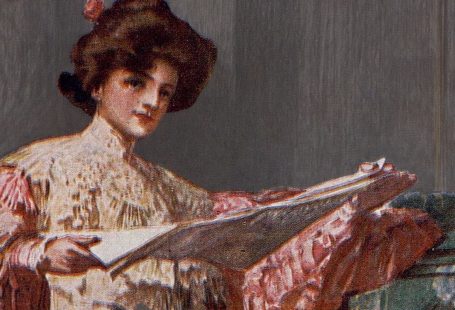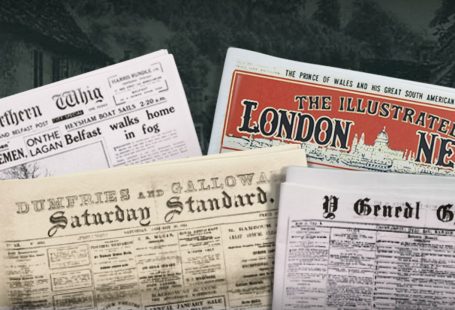This week we are continuing to bring you the best of what The Archive has to offer – and this week’s highlights have a particularly nautical flavour. For this week marks 200 years since HMS Beagle was launched, the famous ship upon which naturalist Charles Darwin travelled, and later wrote about, his experiences on the voyage helping to form his theory of evolution.
Charles Darwin | Illustrated London News | 1 April 1982
Read on to discover how we used The Archive to retrace the famous voyage, and also to discover more about one of our very special shipping titles.
Register now and explore the Archive
Newspaper of the Week
No mention of nautical newspapers would be complete without some reference to Lloyd’s List, one of the oldest continuously published periodicals in the world. Jam packed with the latest in shipping intelligence, this publication contains details of ships’ movements across the world, the names of ships’ passengers and their captains, and latterly information pertaining to docks, including the ‘London Dock Directory.’
Number of Pages | Year Range |
| 234,948 | 1801-1884, 1887-1890, 1892-1894, 1896-1901, 1903-1910, 1912 |
Although the format of Lloyd’s List as we know it began in 1734, the concept originated in the 1690s. Began by Edward Lloyd, owner of Lloyd’s Coffee House in London, it was a newsletter aimed at his regular customers, who numbered insurance underwriters and merchants. They were eager for news and gossip, and so Lloyd’s News was then more of a general news bulletin.
As time went on, however, the publication evolved to become a source for reliable shipping information. It was Thomas Jemson who oversaw this transition, as Lloyd’s List shifted from a weekly to a twice-weekly publication in 1735.
By 1837 Lloyd’s List was published daily, barring a Sunday. It had also expanded its remit from solely British and Irish ports, and contained the latest shipping information from ports across the world. In 1884 it joined with the Shipping and Mercantile Gazette, and continues to this day.
Lloyd’s List | 10 January 1851
Lloyd’s List is an excellent research aid. For example, those with naval ancestors will be able to trace when and where their forebears were travelling. It can also help with research into specific historic events, such as the voyage of the Beagle.
The Voyage of The Beagle
HMS Beagle was launched 200 years ago this week, on the 11 May 1820 at Woolwich Dockyard on the River Thames. The Beagle would of course gain international fame as the vessel upon which Charles Darwin travelled around the world, but we were curious here at The Archive to discover when the ship was first mentioned in our newspapers.
Search tip: to find the earliest mention of a search term in our Archive sort your results by ‘Date (earliest)’
The first mention of the Beagle is in shipping title Lloyd’s List, 4 July 1826. It records the Beagle’s arrival in Madeira from Plymouth, and its subsequent departure to South America. Several months later, the Beagle is listed as having arrived in Rio de Janeiro. This was the first voyage of the Beagle, where the ship, alongside HMS Adventure, was detailed to survey Patagonia and Tierra del Fuego.
The Beagle’s arrival in Rio de Janeiro | Lloyd’s List | 6 October 1826
But it was on the Beagle’s second voyage, beginning in December 1831, that recently graduated naturalist Charles Darwin was aboard. The brig-sloop was again to undertake more surveys in South America, and Darwin was to be the ship’s naturalist.
The Public Ledger and Daily Advertiser on 30 December 1831 gives notice of the departure of the Beagle: ‘Sailed, his Majesty’s ship the Beagle, on a voyage around the world.’
The Beagle at anchor off Tierra del Fuego | Illustrated London News | 1 September 1974
Under the command of Robert FitzRoy, the Beagle undertook extensive surveys, and it was not until some four years later that the vessel returned to England. The Evening Chronicle, 4 July 1836, publishes the order to return: ‘Following ships on foreign stations are ordered home to be paid off.’ Heading up this list is the Beagle.
Our newspapers record the Beagle’s long journey back, by way of New Zealand. The Sun (London) reports on 6 June 1836: ‘The Beagle, surveying ship, Commander Fitzroy, was at New Zealand, on her way to England, 30th December last.’
Lloyd’s List picks out her progress on 2 August 1836, detailing how the Beagle had arrived in the Cape of Good Hope from Mauritius. Finally, on 5 October 1836 the Public Ledger and Daily Advertiser reports from Falmouth that ‘H.M. surveying vessel Beagle arrived here, to-day: she has been four years and upward out.’
The Beagle’s arrival at the Cape of Good Hope | Lloyd’s List | 2 August 1836
And it was some three years later that Charles Darwin published his Journal and Remarks upon the voyage, which he would revise to contain his theory of evolution. Initially published with ship commander’s FitzRoy’s narrative of the voyage, the Sun (London) advertises in July 1839 the Zoology of the Voyage of HMS Beagle, to be published in parts. Containing ‘highly-finished presentations of the most novel and interesting objects in Natural History, collected during the voyage,’ it was ‘edited and superintended by Charles Darwin…Naturalist to the Expedition.’
1839 was an important year for Darwin, not only because his writings gained great acclaim. We also found notice of his marriage to Emma Wedgwood in the Worcestershire Chronicle, with whom he went on to have ten children – showing the versatility of our Archive in varying aspects of historical research.














